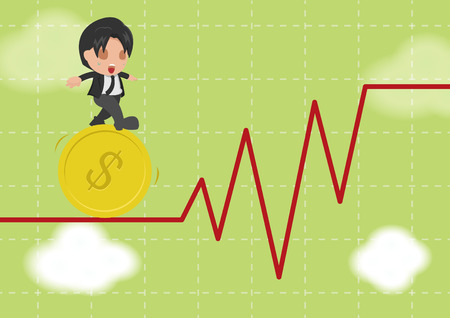1. Understanding Indexed Universal Life (IUL) Basics
Indexed Universal Life insurance, or IUL, is a unique type of permanent life insurance that’s become especially popular in the United States for retirement planning. Unlike traditional whole life or term policies, IULs offer flexible premiums, lifelong coverage, and a cash value component that can grow over time based on the performance of a selected stock market index—like the S&P 500.
How Does an IUL Policy Work?
When you pay premiums into an IUL policy, part of your money goes toward the cost of insurance and fees. The rest is allocated to your policy’s cash value account. This cash value has the potential to grow based on how well your chosen market index performs. However, it doesn’t invest directly in the stock market—instead, it credits interest to your account according to specific rules set by the insurer.
Key Features That Set IUL Apart
| Feature | Description |
|---|---|
| Growth Caps | The maximum rate your cash value can earn each year, even if the index does better. |
| Participation Rates | The percentage of the index’s gain credited to your account (e.g., 80% of actual growth). |
| Spread Fees | A set percentage subtracted from any gains before they’re added to your cash value. |
| Flexible Premiums | You can adjust your payment amounts and timing as your financial situation changes. |
| Lifelong Coverage | As long as minimum requirements are met, coverage lasts for your entire life. |
| Tax-Deferred Growth | Your policy’s cash value grows without being taxed until you withdraw funds. |
Why Are IULs Popular for Retirement Planning?
IULs offer a combination of life insurance protection and growth potential for your savings. Americans often choose them because:
- Downside Protection: Your cash value doesn’t lose money if the index declines—returns never go below zero (after fees).
- Upside Potential: When the market does well, you get credited with interest up to the cap or participation rate.
- Tax Advantages: Money grows tax-deferred, and loans or withdrawals during retirement can be structured to minimize taxes.
- Flexibility: You control premium payments and can access your cash value if needed.
2. What Are Growth Caps?
When you’re exploring Indexed Universal Life (IUL) insurance, one term you’ll see a lot is “growth cap.” Understanding this feature can help you figure out how your policy might grow over time.
How Growth Caps Work in IULs
A growth cap is the maximum interest rate your cash value can earn in a given year, based on the performance of a chosen market index like the S&P 500. Even if the index goes up higher than the cap, your credited interest won’t exceed this limit. This cap is set by the insurance company and can change from year to year.
Why Do Insurers Use Growth Caps?
IUL policies give you a way to benefit from market gains without risking losses if the market drops. To make this work, insurers use caps so they can afford to offer downside protection. In exchange for protecting you from negative returns, they limit how much you can earn when markets do well.
Typical Growth Cap Ranges
| Index Option | Typical Growth Cap (Annual) |
|---|---|
| S&P 500 | 8% – 12% |
| Nasdaq 100 | 7% – 11% |
| EURO STOXX 50 | 6% – 10% |
(Caps vary by insurer and policy type. Always check your policy illustration.)
The Impact of Growth Caps on Your Cash Value
Your policy’s cash value grows based on the credited interest rate each year. If the index rises above the cap, you only get credited up to that maximum amount. For example, if your cap is 10% and the index goes up by 15%, your account gets credited with 10% for that year.
Example Scenario
| Year | Index Performance | Your Growth Cap | Credited Interest |
|---|---|---|---|
| Year 1 | 12% | 10% | 10% |
| Year 2 | -5% | 10% | 0% (floor applied) |
| Year 3 | 8% | 10% | 8% |
This means growth caps protect against big losses but also put a ceiling on how much your money can grow each year.

3. Participation Rates Demystified
Understanding participation rates is key when it comes to Indexed Universal Life (IUL) policies. Simply put, a participation rate determines how much of the market index’s gain your policy will actually benefit from. If you’re considering an IUL as part of your financial plan, knowing how these rates work—and how insurers set them—can help you make smarter choices.
What Is a Participation Rate?
The participation rate is the percentage of the index gain that’s credited to your policy. For example, if your IUL has an 80% participation rate and the linked index grows by 10% in a year, you’ll get 8% credited to your cash value (not the full 10%).
How Insurers Set Participation Rates
Insurance companies determine participation rates based on several factors, including current interest rates, their investment performance, administrative costs, and the terms of your specific policy. These rates can be fixed for a period or subject to change annually depending on the insurer and the policy’s structure.
Typical Participation Rate Ranges
| Policy Type | Participation Rate Range |
|---|---|
| Traditional IUL | 60% – 100% |
| Aggressive IUL or Enhanced Options | 100% – 140% (sometimes higher) |
Why Do Participation Rates Matter?
Your IUL earnings are directly tied to this rate. A higher participation rate means more potential growth in your policy’s cash value during strong market years. However, keep in mind that higher participation rates may sometimes come with trade-offs like lower growth caps or additional spread fees.
An Example: Calculating Your Credited Interest
| Index Gain | Participation Rate | Interest Credited to Policy |
|---|---|---|
| 12% | 75% | 9% |
| 15% | 90% | 13.5% |
| 8% | 80% | 6.4% |
Bottom Line: What This Means for You
If you want to maximize your IUL’s potential for growth, pay close attention to the participation rate offered—not just the cap or any additional fees. The right balance between these components can help you harness more of the upside when markets perform well while still enjoying downside protection built into most IULs.
4. Decoding Spread Fees and Their Role
When exploring Indexed Universal Life (IUL) insurance policies, it’s important to understand how different policy features affect your potential cash value growth. One key feature that often gets overlooked is the “spread fee.” Let’s break down what spread fees are, how they impact your returns, and why knowing about them can help you make a smarter decision when selecting an IUL policy.
What Are Spread Fees?
A spread fee—sometimes called an “asset charge” or “yield spread”—is a percentage that the insurance company subtracts from the interest credited to your policy’s cash value. In simple terms, it’s a cut that the insurer takes before you see your credited interest from the index performance.
How Do Spread Fees Work?
Imagine the S&P 500 (or another chosen index) goes up by 7% in a year. If your IUL has a spread fee of 2%, the credited interest for your cash value would be:
| Index Performance | Minus Spread Fee | Your Credited Interest |
|---|---|---|
| 7% | -2% | 5% |
| 10% | -2% | 8% |
| 5% | -2% | 3% |
If the index return is less than the spread fee, you won’t get any credited interest for that period—but you also won’t lose money due to negative index returns, thanks to the IUL’s floor.
Why Do Insurance Companies Use Spread Fees?
Spread fees help insurance companies cover their costs and manage risks associated with offering index-linked credits while protecting against market downturns. It’s part of how they balance giving you upside potential without exposing themselves—or you—to direct market losses.
The Impact on Your Returns
The size of the spread fee directly affects how much of the index gain you actually receive. Higher spread fees mean lower credited interest to your account—even if the index performs well. This makes understanding each policy’s spread fee just as important as knowing its cap rate and participation rate.
Comparison Example: Spread Fee vs. Participation Rate vs. Cap Rate
| Feature | Description | Effect on Returns |
|---|---|---|
| Spread Fee | A flat percentage subtracted from index gains before crediting interest to your account | Lowers your credited interest by a set amount regardless of how high the index performs |
| Participation Rate | The percentage of the index gain you receive (e.g., 80% of index return) | Lowers your credited interest proportionally to the participation rate |
| Cap Rate | The maximum limit on how much interest can be credited in one period (e.g., no more than 9%) | Lowers your credited interest if the index gain exceeds the cap rate |
Why You Need to Pay Attention to Spread Fees Before Choosing an IUL Policy
If you’re comparing IUL products, don’t just look at projected returns or marketing materials. Ask about all policy charges—including spread fees—since even a small difference can have a big impact over time. A lower cap with no spread fee might outperform a higher cap with a large spread fee, depending on market performance. Understanding these mechanics helps ensure you pick an IUL policy that aligns with your financial goals and expectations.
5. Evaluating IUL Policies: Tips for Smart Choices
Understanding Key Policy Features
When comparing Indexed Universal Life (IUL) policies, it’s important to look beyond just the headline rates and focus on three main mechanics: Growth Caps, Participation Rates, and Spread Fees. These features directly affect how much interest your cash value can earn each year. Here’s a quick breakdown:
| Feature | What It Means | Impact on Your Policy |
|---|---|---|
| Growth Cap | The maximum interest rate your cash value can earn in a given year, even if the market does better. | Limits your upside potential. If the cap is 10% and the index returns 12%, you only get 10%. |
| Participation Rate | The percentage of the index gain that is credited to your account. | If participation is 80% and the index earns 10%, you get 8%. |
| Spread Fee | A fixed percentage deducted from any gains before they’re credited to your policy. | If the spread fee is 2% and the index earns 10%, you receive 8% (before considering caps or participation rates). |
How to Compare IUL Products Effectively
1. Read Policy Illustrations Carefully
Each insurance company will provide a policy illustration showing possible future values based on current assumptions. Remember, these numbers are projections, not guarantees. Pay attention to:
- The assumed growth rate versus actual cap, participation, and spread details
- Guaranteed minimums in case of poor market performance
- Fees and expenses shown over time
2. Focus on Flexibility and Transparency
A good IUL should offer clear explanations of how caps, participation rates, and spreads can change over time. Ask your agent or advisor:
- How often can these rates be adjusted?
- What are the historical averages for these features with this company?
- Are there guaranteed minimums for participation or cap rates?
3. Match Features to Your Financial Goals
Your ideal IUL will depend on what matters most to you—maximum growth potential, downside protection, or lower fees. Here are some things to consider:
- If you want more stability: Look for higher guaranteed minimums and lower fees, even if it means lower caps.
- If you’re focused on growth: Aim for higher caps and participation rates, but watch out for higher spread fees or policy costs.
- If flexibility matters: Some policies allow you to switch between different index strategies each year—see if that option fits your needs.
Navigating Policy Statements Over Time
Your annual policy statement will show how much interest was credited based on last year’s index performance and your policy’s specific mechanics. Review these statements regularly to ensure your policy continues to align with your expectations and financial goals.


